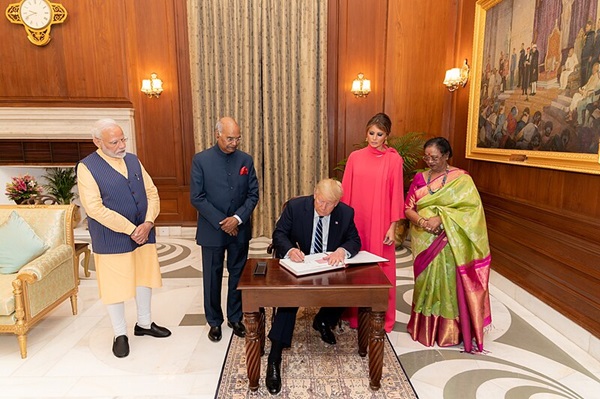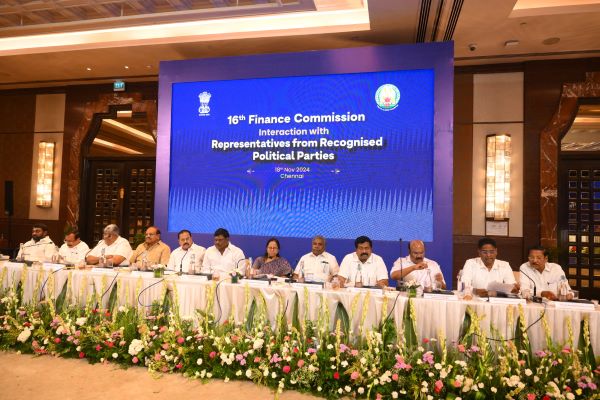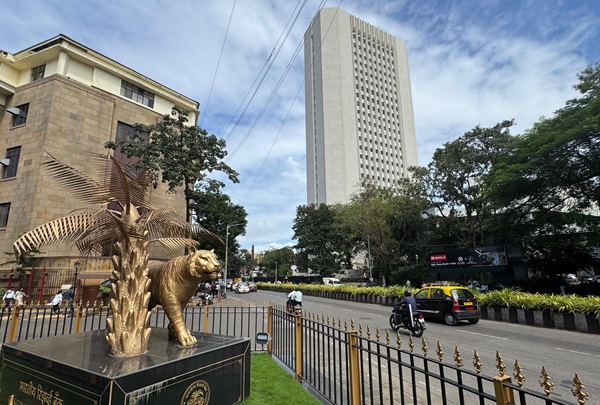.png)

Groupthink is the House View of BasisPoint’s in-house columnists.
April 3, 2025 at 1:11 PM IST
India’s official response to the United States’ sweeping new reciprocal tariff regime is measured to the point of opacity. While President Donald Trump’s Executive Order imposes a 10% universal tariff from April 5 and an additional 27% surcharge on Indian goods from April 9, the Indian government’s press note reads more like a diplomatic placeholder than a policy roadmap.
The White House has branded April 5 as Liberation Day, marking the moment the US “freed itself” from what it sees as a rigged system of lower tariffs and unequal trade. The 10% universal tariff now applies to all trading partners. India, among those singled out for an additional surcharge, faces a sharp escalation in export duties—nearly quadrupling rates on some product lines. Trump further singled out India calling New Delhi as “very very tough” during the briefing on the reciprocal tariffs.
The Indian government’s official response outlines that the Department of Commerce is “assessing the implications” and is “engaged with stakeholders.” Yet beyond bureaucratic phrasing, there is no substantive signal on strategy.
The statement avoids any mention of retaliation, offers no clarity on whether New Delhi will mount a multilateral challenge at the World Trade Organization, and provides no outline of sector-specific fallout or compensatory support for affected exporters.
In stark contrast, China’s response has been direct and assertive. Beijing has firmly opposed the US tariffs, called for their immediate cancellation, and warned that the measures “endanger global economic development”. The Chinese commerce ministry has vowed to take countermeasures to safeguard its rights and interests, signalling clear intent to retaliate.
Other affected nations have also responded with greater clarity. The European Union, which faces a 20% duty under the new regime, has issued a sharp rebuttal and is preparing counter-tariffs. European Commission President Ursula von der Leyen stated that the EU would not “stand idly by” and would act to protect its economic interests. Japan’s Trade Minister, Yoji Muto, called the move “extremely regrettable” and suggested Tokyo would push for exemptions while exploring bold responses.
Some countries that were spared the additional tariffs didn’t mince words either. Australia, which faces only the 10% base tariff, called the move a hostile act against an ally—not the act of a friend. Canada and Mexico, though exempt from the reciprocal tariffs, were affected by recent blanket levies on products such as automobiles and joined the chorus of criticism. Canadian Prime Minister Mark Carney said he would “fight these tariffs with countermeasures,” while Mexico warned of a “tit-for-tat” on tariffs.
India’s contrastingly subdued tone—focusing on long-term initiatives like ‘Mission 500’ and the COMPACT partnership—appears cautious, even prudent. Yet this restraint risks being seen as non-committal at a time when exporters are seeking certainty. The government’s statement offers no assessment of impact or timelines for resolution.
To be fair, New Delhi may be leaning on backchannel diplomacy. An overtly critical statement might derail sensitive negotiations already underway. Even so, there is a fine line between restraint and indecision. The current posture suggests the latter.
India cannot afford to let exporters navigate this disruption in the dark. With the new tariffs coming into effect within days, the domestic industry needs more than vague reassurances of strategic alignment. It needs visibility, preparation, and clarity—delivered not just behind closed doors, but also in public.
Talking about a potential “multi-sectoral Bilateral Trade Agreement” that has been in the works doesn’t help either. Such an agreement would offer little succour, given that Trump has trampled over similar trade deals, even with close US allies, in recent times to advance his “Make America Great Again” agenda.
There is virtue in restraint—but too much of it, at the wrong time, can look like drift.
Also Read:
What Drives Trump's Madness
Reciprocal Tariffs: Brace For Impact
Trump’s Tariff Shock Revives Mercantilism, Endangers Global Trade
Bilateralism Trumps Multilateralism As US Resets Trade Terms
India’s Muted Response To US Tariffs Contrasts With Global Assertiveness
India Likely to Gain from Trump’s Tariff Overhaul
India Singled Out In Trump’s Escalating Tariff crusade




